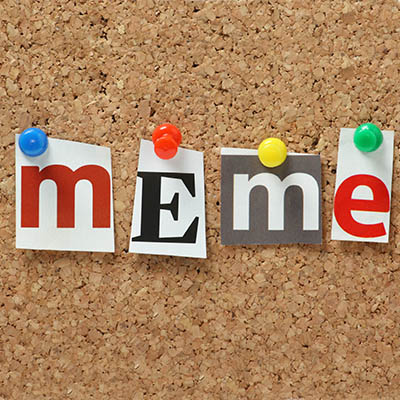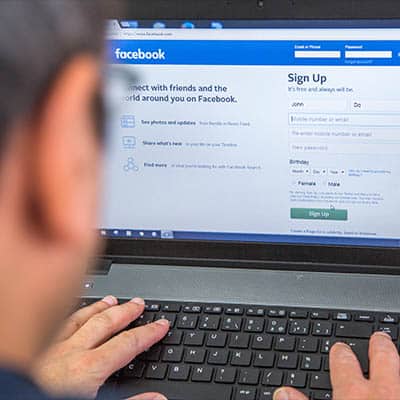This story doesn’t start with a Presidential tweet. It starts with Facebook. After the 2016 presidential election, Facebook came under fire for allowing foreign operatives to influence the outcome of said election. This isn’t even Facebook’s first time dealing with misinformation, and it definitely won’t be the last. Since taking office President Trump has utilized Twitter almost daily to move his administration’s political policy along, criticize political opponents, and give his opinion. With the 2020 election on the horizon, Twitter CEO, Jack Dorsey–unlike Facebook CEO Mark Zuckerberg–stated that he was not going to sit idly by as trusted officials use the platform he created to spread disinformation by tweeting, “We’ll continue to point out incorrect or disputed information about elections globally. And we will admit to and own any mistakes we make.” Twitter has implemented a Civic Integrity Policy, in which they have stated that they won’t be used for the purpose of manipulating or interfering in elections or other civic processes. This policy has left many people critical of Dorsey, and Twitter, for allegedly prioritizing perspectives that ignore a conservative point of view. Twitter proclaims that they were just enforcing their company policy. With the use of Twitter a large part of the White House’s current leadership strategy, President Trump moved quickly signing executive order #13925 – Preventing Online Censorship. The order talked about the immense power social media companies have and how it is crucial that there is some oversight to how these platforms change, edit, and delete information. The Center for Democracy and Technology has filed a federal lawsuit with the President as the defendant stating that the executive order is unconstitutional and violates the First Amendment to the Constitution. They’ve also gone on record stating that tech company executives believe that the order will backfire and do more to limit free speech to stem the liability they would be under. This saga is far from over. What are your views? Do you think that Twitter, Facebook, and other social media companies are doing enough? Do you think the White House is overstepping its mandate? Leave your respectful thoughts in the comments section below.
Colleen from finance had handed out treats, Fresh homemade cookies, hand-frosted and sweet, So, with smiling mouths filled with sugary tastes, All had made their way home, arriving with haste. With Santa Claus starting his gift-giving flight, The office was dark, with minimal light. The monitors sleeping, the servers were quiet, All was at peace, no cause for disquiet. For the office was shielded by a steadfast guard, A managed service provider, of highest regard – And thank goodness it was, for early that day An emergency threatened to cause a delay. In early morning hours, December 24, The servers were running their nightly backup chores. The MSP realized the problem at hand, Their disk space was filled up, an issue unplanned. Luckily, the office had wisely signed on, To have their IT watched over to avoid denouement, Remote Monitoring and Maintenance protected their assets, As the MSP caught and resolved any threats. From malware and spyware, to issues of all kinds, Attacks and vulnerabilities, and all of their signs, The MSP acts, and the MSP delivers, Acting as a business’ IT caregivers. So, when the MSP realized the disk space-based issue, A solution was deployed so the backup could continue, By deleting some outdated backups to free up space, The MSP reported the problem to the workplace. But the MSP did more than just issue a report, The professionals there explained why the backup fell short, And recommending to the business more space to save data, The MSP helped keep their storage pro rata. How happy the business was to have this service – To know that they had little reason to be nervous! To trust that any problems of theirs would be addressed, Without breaking the bank or leaving them stressed. So, the staff of the business was free to relax, Without worrying that problems would fall through the cracks. So, without any remnants of their after-hours plight, A Happy Christmas was had by all, and all had a good night.
What Is an Internet Meme? The concept for the meme was actually an academic concept coined by biologist Richard Dawkins in his 1976 book The Selfish Gene. He suggested that it was the evolution of society to create units of cultural transmission. Today, that thesis is carried out millions of times a day through the Internet meme. They are messages shared across the Internet typically using images to represent the underlying feelings, thoughts, and beliefs of the people creating and sharing them. Their prevalence cannot be underestimated, as they have evolved to cover all of human existence (and further). There are three variables that make an Internet meme successful. They are: longevity, fertility, and copy-fidelity. This means that the most popular Internet memes resoundingly resonate with people, creating the need for duplication, and ultimately, replication using similar scenario-specific criteria. Basically, the meme is shared, copied, shared, altered slightly, and shared. With the advent of social media, meme use has exploded, becoming a cultural phenomenon that transcends specific topics. Our Favorite IT Memes You probably already understand why you like memes: they tend to make you laugh because you relate with the perceived message/action. Here are a few of the IT memes we like: Managed IT Services This meme starts from a scene from the movie Taken where retired CIA field agent Bryan Mils had his daughter stolen. In the movie, he utters the phrase, “I have a particular set of skills…” The meme was changed to use that very well-known phrase and image to list his IT management skills. This meme shows the character Andy Dwyer of NBC’s Parks and Recreation who is a simple man with a heart of gold; and, whose naivete and enthusiasm have landed him in an uncomfortable position. In fairness, there are many people who still aren’t sure of what managed services actually are, making this meme relevant. IT Support This meme shows Lt. Commander Montgomery Scott on the Com on the bridge of the U.S.S. Enterprise. The U.S.S. Enterprise is far-and-away a more complicated machine than your average PC (despite the lights and tactile switches found in the shot), the term “Have you tried switching it off and on again?” is funny. It is the first thing that tech support will ask anyone if their device isn’t working properly. Backup and Disaster Recovery Some memes are funnier than others. This one, featuring “disaster girl” suggests that the reason you need disaster recovery is because your sweet, unsuspecting child just might be a demon-seed. Protecting what you have is important, and for the business, that means disaster recovery. The Cloud Cartoons, like the one above, can be memes. In fact there are five potential memes in this cartoon, but we thought we would post the full cartoon because it’s enjoyable. If you were to meme this cartoon successfully, it would look something like this: Sometimes memes get right to the point instead of trying to be cute. This one, with a picture of Morpheus from the popular movie The Matrix tells the ultimate truth about computing in the cloud. The cloud has many computing users confused, but in essence, the cloud is just another computer somewhere on the Internet in which you store your data, run applications from, etc. Cybersecurity Cybersecurity is one of the most […]
The only way to be completely private on Facebook is by not signing up, but there are some things you can do to protect your identity. Namely, you can begin limiting what you share and with whom. The social media giant has had plenty of problems over the years. Some are more egregious than others. We don’t want to get into any individual issue too much, but here are a few times where Facebook has stepped over the line: Without consent, 2007 introduced a feature which companies could track purchases by Facebook users and then notify friends of the goods that were bought. In 2011, Facebook was hit with a brutal charge by the FTC. The platform had been allowing private information to be made public, without so much as a warning. Facebook was letting third-parties access user information without consent. In 2013, Facebook had a very generous activity. Alongside the “Donate” button to be able to donate to charities, they also had this helpful bug that leaked the email addresses and phone numbers of over six million Facebook users. 2014 was the year Facebook decided to do some research. They wanted to know if they had the ability to make users depressed. Turns out, they did. They purposely displayed depressing content in hopes that users would feel overwhelmed with depression. In 2015, Facebook finally addressed growing privacy concerns. They put their foot down, and no longer allowed Facebook apps to have boundaryless private user data. What does this mean they were allowing before 2015? In 2018, more sensitive information was released. Who about this time? Facebook. 2018 was the year that revealed Facebook had a massive 50 million user data breach. However, they justified the breach by doing nothing about it, until their reputation began dwindling. Once they noticed how poorly this affected their image, then they decided they should do something about the breach. For Facebook, privacy-related concerns have come to be a regular occurrence. When you have a free-to-use interface that is used by billions of people, you have to be more careful than you would otherwise, while also finding ways to make a profit. This has been proven to be difficult for Facebook over the past few years. Today, we’re going to help you out by providing you with information on how to best protect your Facebook profile. Facebook’s Privacy Options Log in to your Facebook account on your desktop. There is a small down arrow at the top right of the page. Click on it and go to settings. From there, click Privacy. Facebook will allow you to set privacy options that will control the people that have access to your information: Public – Anyone can see this information, even if they are not your current Facebook friends, and even if they aren’t signed into Facebook. In theory, this means search engines can see your information as well. Friends – This means only people you are Facebook friends with can see the information. Friends except… – This lets you filter out some of your friends or specific user-created groups from seeing certain information. Only me – This means none of your friends can see the information, and that it is strictly between you and Facebook. Still, don’t share anything that you wouldn’t want to get […]
Myth #1 – The more RAM you have the faster your PC will go. RAM, or random-access memory, is thought to make any system run quicker. This isn’t the case. RAM is nothing more than a super-fast temporary storage space where your active programs are called from. By increasing your RAM, you will only help open more programs at the same time. That’s not to say that RAM isn’t important, as sometimes you need to run a lot of programs at once. When your system doesn’t run smoothly, and you add more RAM to it, it may begin to run better, but that is contingent on the commands you give the computer and the intensiveness of the software. Myth #2 – You need to click on “Safely remove USB” button on your taskbar. Our next myth is that if you don’t click on the “Safely remove USB” button that appears on your taskbar, and you remove a USB drive, you run the risk of corrupting the data and any changes written to the disk won’t be saved. The truth is that if you are not reading or writing data to the disk, there is no problem with simply pulling it out of the USB. The virtual button only ensures that the OS is not sending or receiving data to the drive, but most times you’ll know. Myth #3 – Don’t use your smartphone while it is charging. The next myth is one that we’ve heard time and again, especially after the Samsung Galaxy Note 7 snafu where devices were catching fire. All smartphones use lithium-ion batteries that have a very small chance to explode. Furthermore, the process of using the phone and charging the phone has not traditionally led to explosion. Skeptics cite that phones warm up more than usual when they are charging. If you are dealing with a phone that is hot to the touch (and isn’t running graphic-intensive applications) chances are you need to replace your charger or your phone, because its battery is shot. Myth #4 – You should only use your phone manufacturer’s charger. The lead in for this myth comes from the last one. If you don’t use the phone manufacturer’s charger you risk ruining its battery or having the phone explode. This is patently false. You can obviously use other chargers to charge your phone. It may not charge as fast, but as long as you use a well-made charger with the same specs there is no reason to think that the device will be harmed by using chargers not made by the manufacturer of the phone. Avoid cheap and poorly made charging hardware, and you and your phone should be just fine. Myth #5 – Using a private browser will keep you hidden. Occasionally, you’ll come across a person that seems to think that the private browsing function that all major browsers have, was made to ensure that no one can track their browsing history. Of course, written on the browser window is a message that says the inverse is true. The private browsing action will only erase locally saved data. Any external source can still track your activity. If you want a secure and private viewing experience, you will need a Virtual Private Network. Do you have any myths you’d like […]
What is a Deepfake, and How Are They Made? A deepfake is a fabricated video that makes it possible to literally put words in someone’s mouth. As demonstrated by multiple research teams, while this technology is not yet perfect, it can be used to create a very convincing video – or an even more convincing still shot. Deepfakes can be made using a combination of techniques and tools. Video Deepfakes Using a specialized software solution, a video is scanned to identify the phenomes (the different sounds that make up full words) that are vocalized. Once they are identified, the phenomes are matched with the facial expressions that produce those sounds (also known as visemes). A 3D model of the subject’s face is then built based on the original video. With the right software solution, these three factors can be combined with a transcript to create new footage and superimpose it over the original, making it appear that the person depicted is saying something that they never said. This creates a video that is just different enough to be disconcerting. A similar method, that relies on mapping the expressions a person makes in source footage and applying them to a second person’s face, can even be used to bring paintings and old photographs to life. Still Image Deepfakes While the still images of people that were produced by AI were initially low-quality and generally unconvincing back in 2014, today’s – just five short years later – are effectively indistinguishable from the real deal. This is thanks to a technique known as a generative adversarial network. Using this technique, one AI generates images of people’s faces, anticipating feedback on how it did. In order to reach the desired level of photo-realism, it could potentially take millions of repetitions – something that nobody has time for. Instead of subjecting a human being to the process of critiquing millions of images, a second AI is used to guess whether the picture was actually created by the first AI, or is a legitimate picture. While neither is particularly effective when first starting out, they swiftly improve in their capabilities over time, and can soon make images that are effectively indistinguishable from actual photographs of real people. Neither of the people pictured here actually exist – they were instead created by NVIDIA in one of their machine learning AI initiatives. As a result, we can see a dramatic rise in the capability for people to spread falsehoods and generally make the Internet a misinformative place. How Misinformative? Let’s look at a relatively recent example of how impactful altered video can be. In May of this year, video of House Speaker Nancy Pelosi blew up on social media that made her appear to be making a speech while intoxicated. Edited to make her sound as though her words were slurred, the original footage had been reduced to 75 percent of its original speed, with the Speaker’s voice adjusted to make it sound more like her natural pitch. This wasn’t the only instance of this happening, either. In addition to this speech, originally delivered at an event for the Center of American Progress, Pelosi’s voice was also manipulated to make her, again, appear drunk as she spoke to the American Road & Transportation Builders Association earlier in May. […]
Food Delivery Is Not New You know all about the local Chinese restaurant or pizzeria that will get their professionally-made food to you, but why do these services offer at-home delivery, while other restaurants expect people to visit their establishment? Simple, pizzerias and Chinese restaurants offer delivery because of their demand. In other words, they can afford to. As people were more apt to stay at home, namely because of the advent of the television, restaurants, who depend on foot traffic, started seeing that traffic, and therefore their margins wane. Unfortunately, ninety percent of independent restaurants that open close within the first year. Chain restaurants, that typically are franchised from corporations, and offer the same fare in all of their locations regardless of ownership, have a better chance of success, but still only have an average five-year life span. How Technology Got Involved With the razor-thin margins many restaurants operate under, there isn’t a lot of extra capital to pay delivery drivers. Some restaurateurs even believe that it is beneath their establishment to offer delivery. Regardless of what an establishment’s reasoning is for not offering home delivery, the demand for it remains. Savvy entrepreneurs saw the demand (in a $7 billion market) and decided that with people’s dependence on technology that it would be profitable to create new companies that develop mobile apps to order and set up take-out or delivery. Some of today’s most successful food delivery apps include: Seamless Grubhub Doordash Uber Eats As reliance on mobile continues to grow, and with the advent of 5G networks, it won’t be surprising for the technology to become more commonplace. While most of the services are only available in larger markets, these companies have been aggressive at moving the services to new ones. Food Delivery Doesn’t Have to Be Prepared Another trend you are seeing in food delivery, is that grocers are beginning to make available produce, and in some cases complete meal plans, for people using mobile technology. These services hire renowned chefs to come up with recipes that can be searched on an online catalog. People will select which meals/food they want from the catalog and the company will ship it to the recipient. Since the company uses fresh ingredients, orders are shipped immediately in refrigerated containers. Some of the top meal-delivery services include: Plated Sun Basket Martha & Marley Spoon HelloFresh Green Chef Corporation Blue Apron Advances in food delivery have just begun to scratch the service of their value. Have you used an app to get food delivered to your house? What do you think about technology’s role in your dining experiences? Leave your comments below, and return to our blog for more great technology information.







